At first I thought I’d seen a Black Falcon; then I knew I hadn’t. I was photographing through the sunroof of my vehicle as the birds were moving so rapidly I couldn’t keep up with them from the ground.
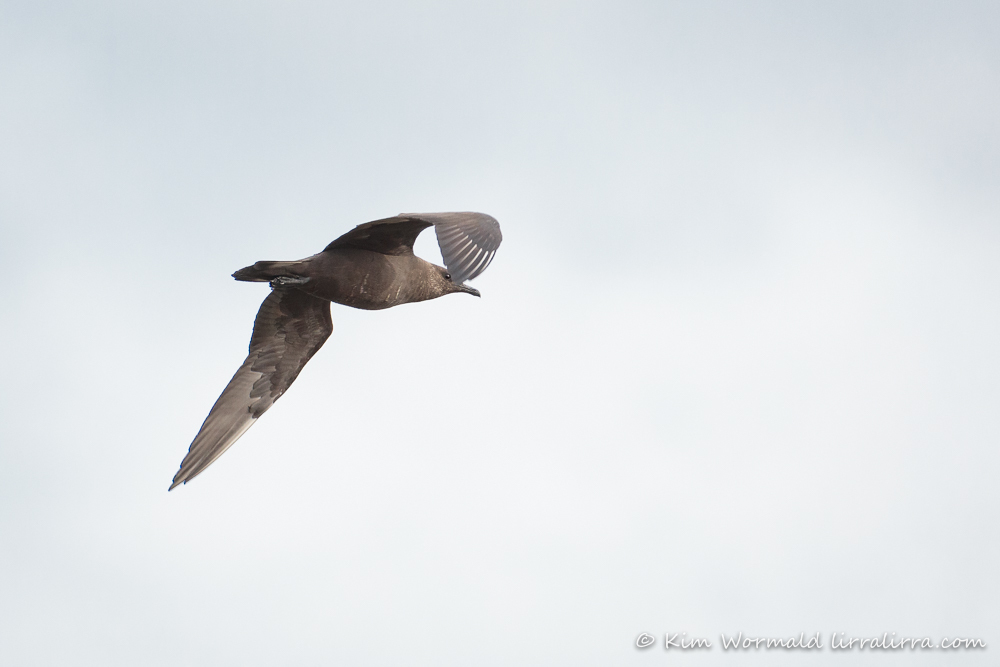
Arctic Jaeger ( Stercorarius parasiticus)
1/1250, f6.3, ISO 1600
There were four Arctic Jaegers and the action was incredible. They moved through the air with more speed and grace than I’ve ever had the pleasure of watching, though the Silver Gulls were less enthralled.
Arctic Jaegers breed in the Arctic and then migrate to the southern hemisphere. They can look remarkably different to each other with their breeding and non-breeding colours as well as light and dark morphs and various immature moults during the first three years. Looking through my field guides I believe the bird above could be a juvenile dark morph.
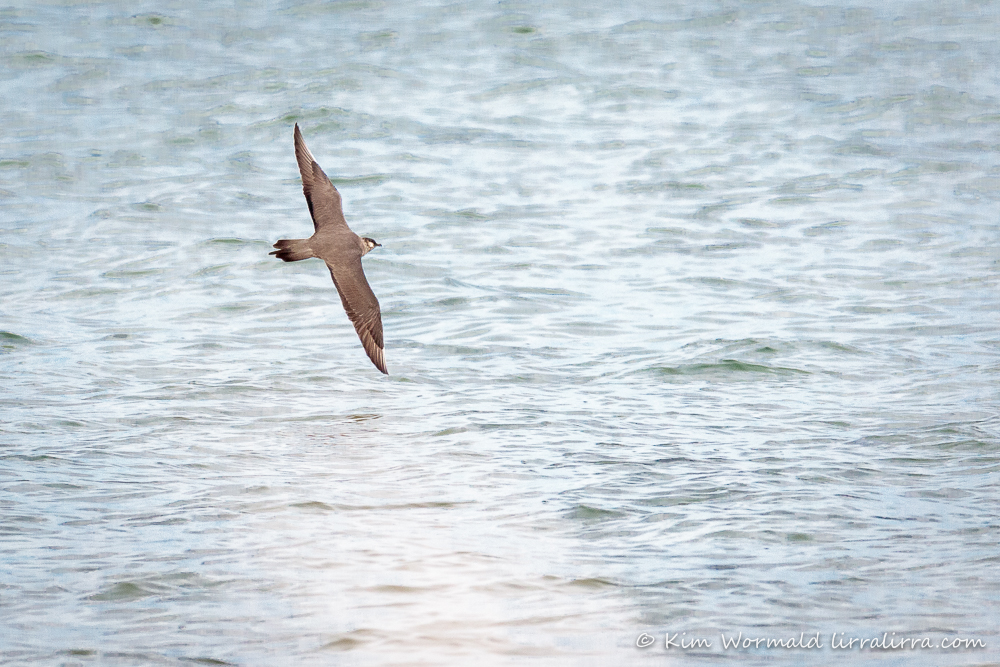
Arctic Jaeger ( Stercorarius parasiticus)
1/1250, f6.3, ISO 1600
The jaeger (pronounced more like yaygah) above could be an immature bird – or maybe an adult non-breeding bird. I will ask some experts and update the page, it’s very tricky to tell which is which from my images using my field guides. Its short tail streamers can be seen as it swooped to turn towards the gulls.
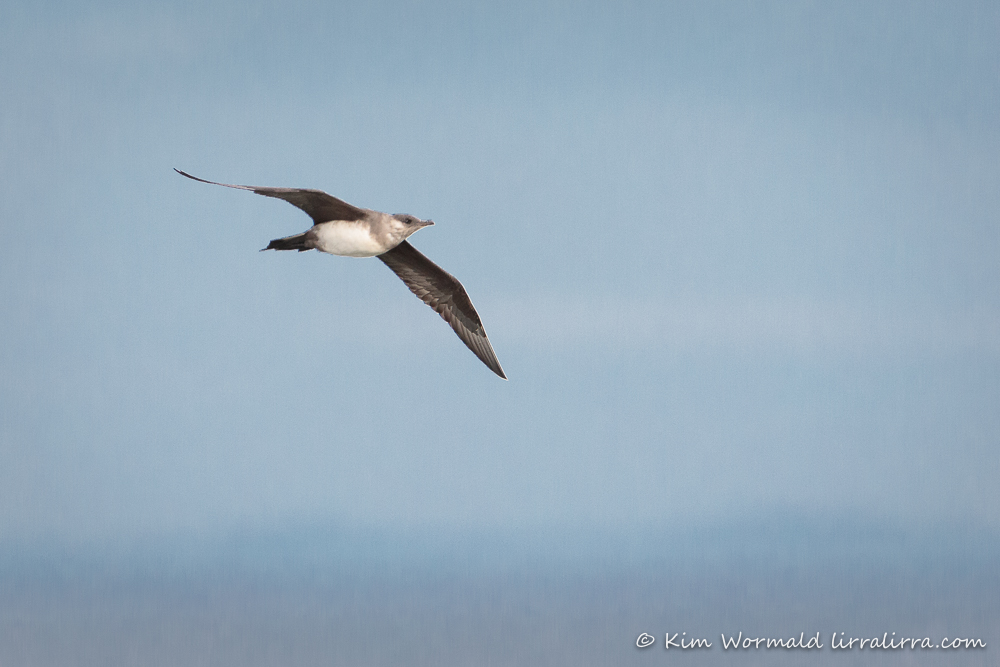
Arctic Jaeger ( Stercorarius parasiticus)
1/1250, f6.3, ISO 1600
When I first saw this bird zooming past it reminded me of a Hooded Plover chick on steroids. This bird’s tail streamers look a little longer. Their flight was incredibly fast and acrobatic with their long, narrow wings enabling them to twist and turn rapidly.
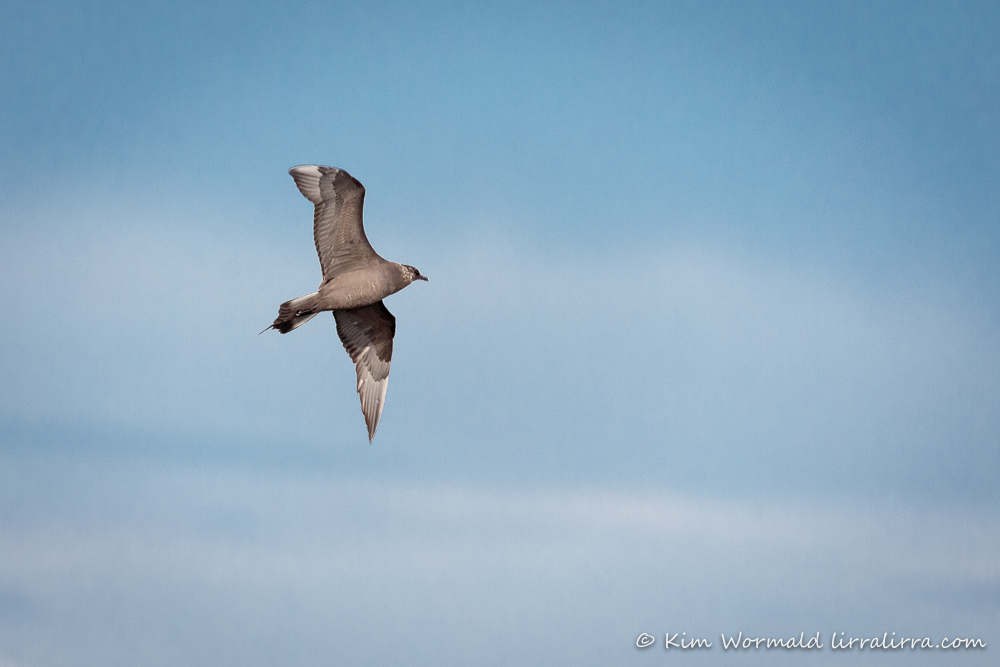
Arctic Jaeger ( Stercorarius parasiticus)
1/1250, f6.3, ISO 1600
These pointed streamers are longer again. Now I’m getting horribly confused. They were moving so quickly I’m amazed I managed to get any recognisable images.
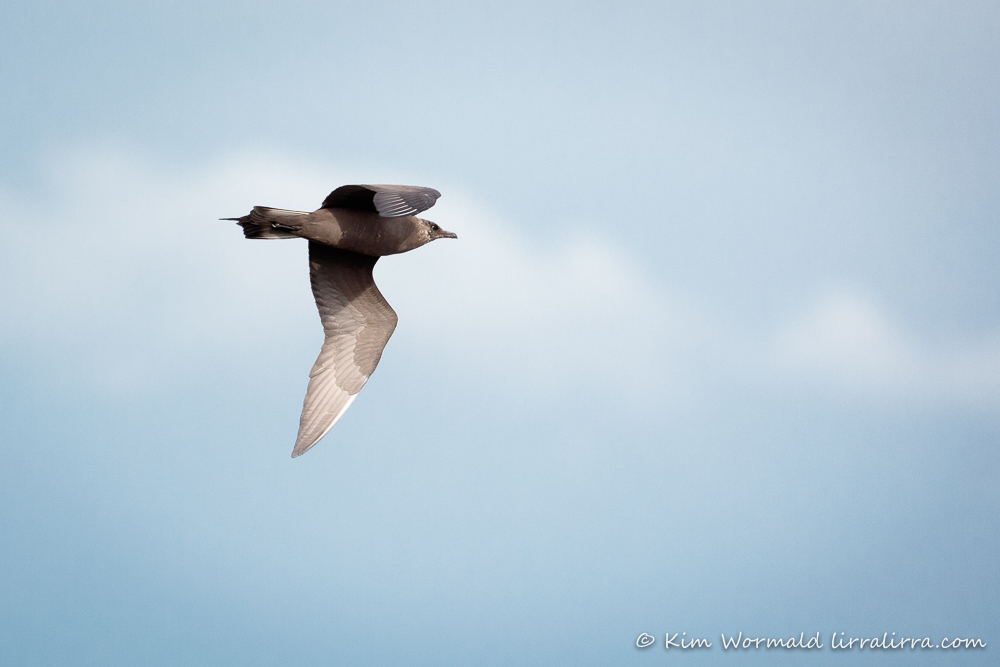
Arctic Jaeger ( Stercorarius parasiticus)
1/1250, f6.3, ISO 1600
Arctic Jaegers are also known as Arctic Skuas and Parasitic Yaegers.
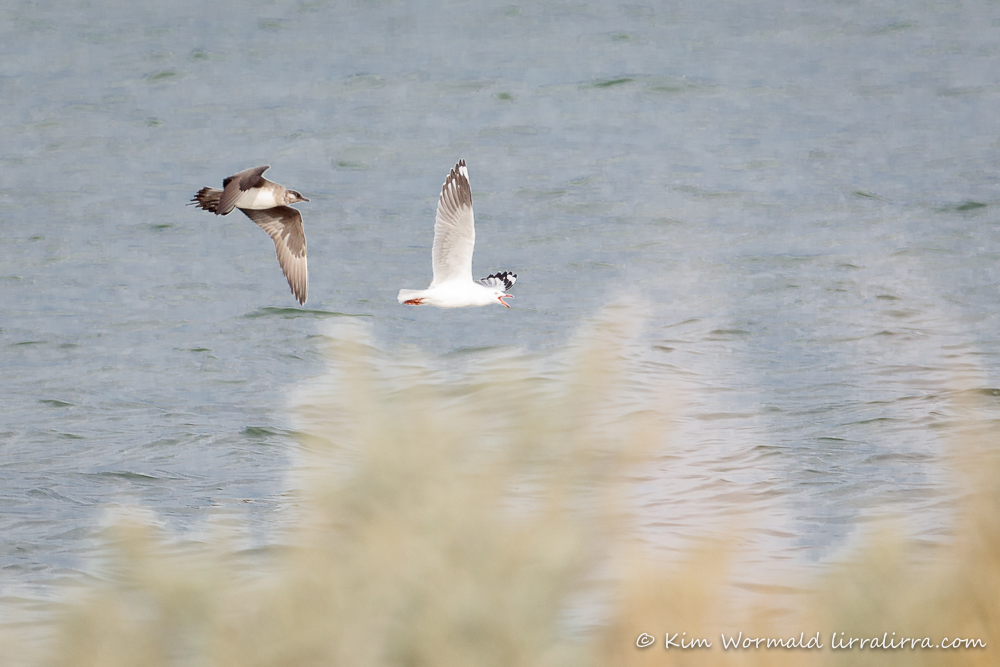
Arctic Jaeger ( Stercorarius parasiticus), Silver Gull (Chroicocephalus novaehollandiae)
1/1250, f6.3, ISO 1600
The grasses in the foreground are at the edge of the sea between the bird hide and the boat ramp at the Western Treatment Plant. If I’d been on the ground I wouldn’t have been able to see the birds as they dived towards the water.
Jaegers chase gulls and terns, harassing them until they regurgitate – they obtain a significant amount of their diet from kleptoparasitism.
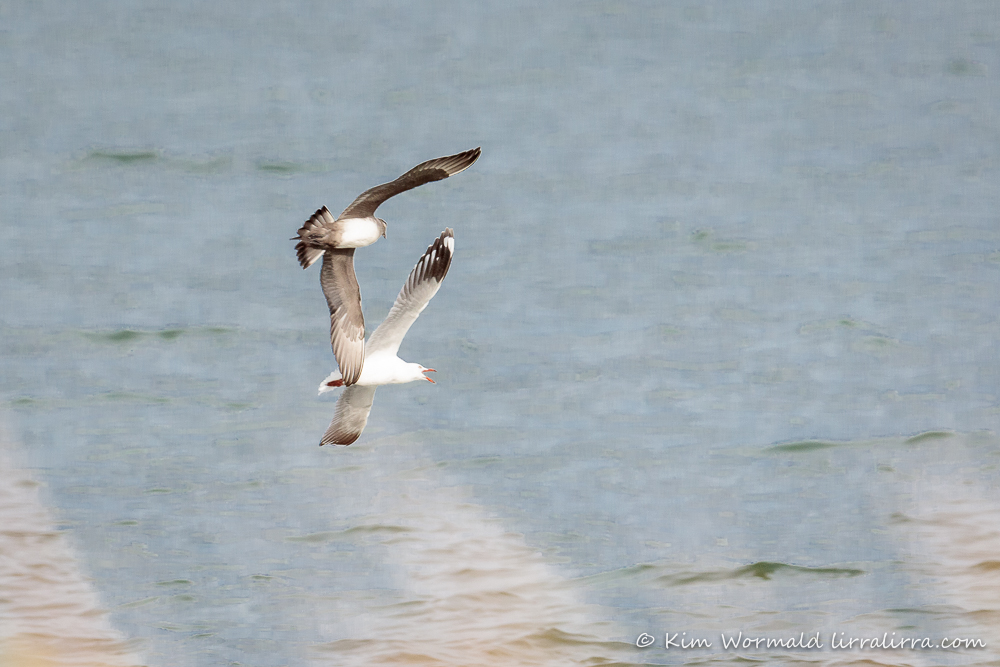
Arctic Jaeger ( Stercorarius parasiticus), Silver Gull (Chroicocephalus novaehollandiae)
1/1250, f6.3, ISO 1600
The jaegers would race towards a group of gulls before singling one out and chasing it with great speed and agility.

Arctic Jaeger ( Stercorarius parasiticus), Silver Gull (Chroicocephalus novaehollandiae)
1/1250, f6.3, ISO 1600
Silver Gulls are slightly smaller than these jaegers and nowhere near as agile.
I feel incredibly lucky to have witnessed such spectacular behaviour. Arctic Jaegers were my second lifer for the day and that doesn’t happen very often when I’m so close to home.
Happy birding
Kim
PS I’m hoping that some experts on the Australian Bird Identification page will be able to properly ID the morphs and ages of these jaegers. If they do I will add more details as soon as I can.
~ thank you for visiting and commenting
~ if you would like to join the subscribers receiving a weekly email when lirralirra is updated, please use the ‘subscribe’ box above right

it reminds me of our water trip to Bruny Island.
Waterbirds are wonderful.
Your images are remarkable.
Wow so jealous! I saw one a couple of years back and was spellbound. To see four and get great shots – wow.
‘Spellbound’ is the perfect word! It was such an amazing spectacle, I’m still smiling
Such wonderful photos and what a find!
Thank you Carolyn, I can still hardly believe it
WHAT a beauty.
I am constantly blown away by just how far some birds travel. Without satnav. And we STILL (some of us) have the hide to consider our species superior.
So am I EC. There are so many things in the animal world that seem miraculous and are way beyond our capabilities.
These are great, Kim, fantastic to get such good shots when they are so fast. I can see why they are hard to identify exactly.
And what was the other lifer that day?
It was tricky to keep them in the viewfinder as they are so fast, as you already know! The other lifer was a Lewin’s Rail, cute, shy and small and pottering amongst the reeds – couldn’t be much more different to the jaegers.
Wow I have never heard of these birds and they seem so fascinating! Crazy how the same bird can look so different, and that they chase other birds until they puke!
I’m fascinated by that too, they look so different. The action and noise was quite incredible, very memorable!
You have to hit the jack pot sometime with all the work you put into it. Lucky you!
It was really remarkable and I definitely feel very lucky